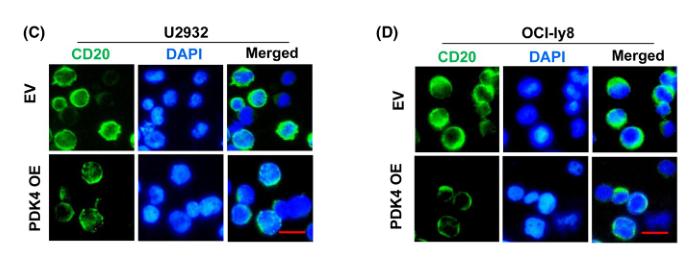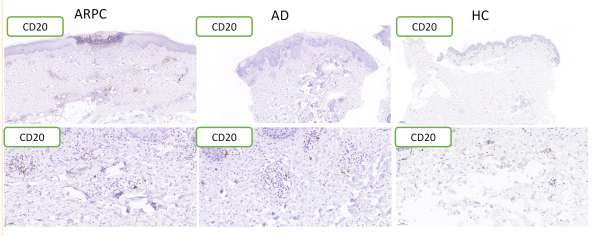CD20 Antibody - #DF13319
製品説明
*The optimal dilutions should be determined by the end user.
*Tips:
WB: For western blot detection of denatured protein samples. IHC: For immunohistochemical detection of paraffin sections (IHC-p) or frozen sections (IHC-f) of tissue samples. IF/ICC: For immunofluorescence detection of cell samples. ELISA(peptide): For ELISA detection of antigenic peptide.
引用形式: Affinity Biosciences Cat# DF13319, RRID:AB_2846338.
折りたたみ/展開
APY; ATOPY; B lymphocyte antigen CD20; B Lymphocyte Cell Surface Antigen B1; B-lymphocyte antigen CD20; B-lymphocyte cell-surface antigen B1; B-lymphocyte surface antigen B1; B1; Bp 35; Bp35; CD 20; CD20; CD20 antigen; CD20 receptor; CD20_HUMAN; CVID5; Fc epsilon receptor I beta chain; Fc Fragment of IgE high affinity I receptor for beta polypeptide; FCER1B; High affinity immunoglobulin epsilon receptor subunit beta; IgE Fc receptor subunit beta; IGEL; IGER; IGHER; LEU 16; LEU16; leukocyte surface antigen Leu 16; Leukocyte surface antigen Leu-16; Ly44; Membrane spanning 4 domains A1; Membrane spanning 4 domains subfamily A member 2; Membrane-spanning 4-domains subfamily A member 1; MGC3969; MS4A1; MS4A2; S7;
免疫原
A synthesized peptide derived from human CD20, corresponding to a region within C-terminal amino acids.
- P11836 CD20_HUMAN:
- Protein BLAST With
- NCBI/
- ExPASy/
- Uniprot
MTTPRNSVNGTFPAEPMKGPIAMQSGPKPLFRRMSSLVGPTQSFFMRESKTLGAVQIMNGLFHIALGGLLMIPAGIYAPICVTVWYPLWGGIMYIISGSLLAATEKNSRKCLVKGKMIMNSLSLFAAISGMILSIMDILNIKISHFLKMESLNFIRAHTPYINIYNCEPANPSEKNSPSTQYCYSIQSLFLGILSVMLIFAFFQELVIAGIVENEWKRTCSRPKSNIVLLSAEEKKEQTIEIKEEVVGLTETSSQPKNEEDIEIIPIQEEEEEETETNFPEPPQDQESSPIENDSSP
種類予測
Score>80(red) has high confidence and is suggested to be used for WB detection. *The prediction model is mainly based on the alignment of immunogen sequences, the results are for reference only, not as the basis of quality assurance.
High(score>80) Medium(80>score>50) Low(score<50) No confidence
研究背景
B-lymphocyte-specific membrane protein that plays a role in the regulation of cellular calcium influx necessary for the development, differentiation, and activation of B-lymphocytes. Functions as a store-operated calcium (SOC) channel component promoting calcium influx after activation by the B-cell receptor/BCR.
Phosphorylated on serines and threonines in resting B-cells. Protein kinase C/PKC can use CD20 as substrate.
Cell membrane>Multi-pass membrane protein. Cell membrane>Lipid-anchor.
Note: Constitutively associated with membrane rafts.
Expressed on B-cells.
Belongs to the MS4A family.
研究領域
· Organismal Systems > Immune system > Hematopoietic cell lineage. (View pathway)
参考文献
Application: IHC Species: Human Sample:
Application: IF/ICC Species: Human Sample: DLBCL cells
Application: WB Species: Human Sample: DLBCL cells
Application: IHC Species: human Sample:
Application: WB Species: Human Sample: DLBCL cells
Application: IF/ICC Species: Human Sample: DLBCL cells
Restrictive clause
Affinity Biosciences tests all products strictly. Citations are provided as a resource for additional applications that have not been validated by Affinity Biosciences. Please choose the appropriate format for each application and consult Materials and Methods sections for additional details about the use of any product in these publications.
For Research Use Only.
Not for use in diagnostic or therapeutic procedures. Not for resale. Not for distribution without written consent. Affinity Biosciences will not be held responsible for patent infringement or other violations that may occur with the use of our products. Affinity Biosciences, Affinity Biosciences Logo and all other trademarks are the property of Affinity Biosciences LTD.








